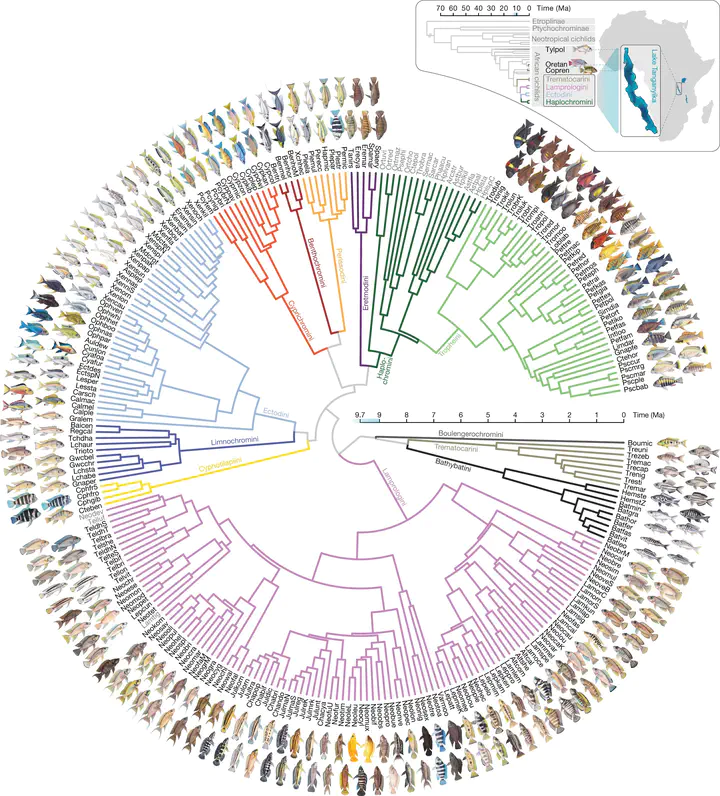Micro-evolutionary comparisons across Lake Tanganyika cichlid fishes

Cichlids represent the most extraordinary example of a vertebrate explosive adaptive radiation — approximately 2000 species have evolved within the last 10 million years in the Rift Valley Lakes of Africa. In these lakes, cichlids have diversified in diet, body size, mating behaviours, colouration, and habitat preferences. We have recently demonstrated that these cichlids display incredible diversity in sleep-related behaviours (sleep timing, sleep duration).
Importantly, these fish are amenable to genetic manipulation, and extensive genomic and phenotypic data already exists for the 250 species in Lake Tanganyika. In the Shafer lab, we use multiple species of cichlids as a powerful model clade for studying why animals change the duration or timing of sleep. Techniques include behavioural comparisons, genomic associations, genetic perturbation, and circuit neurobiology.